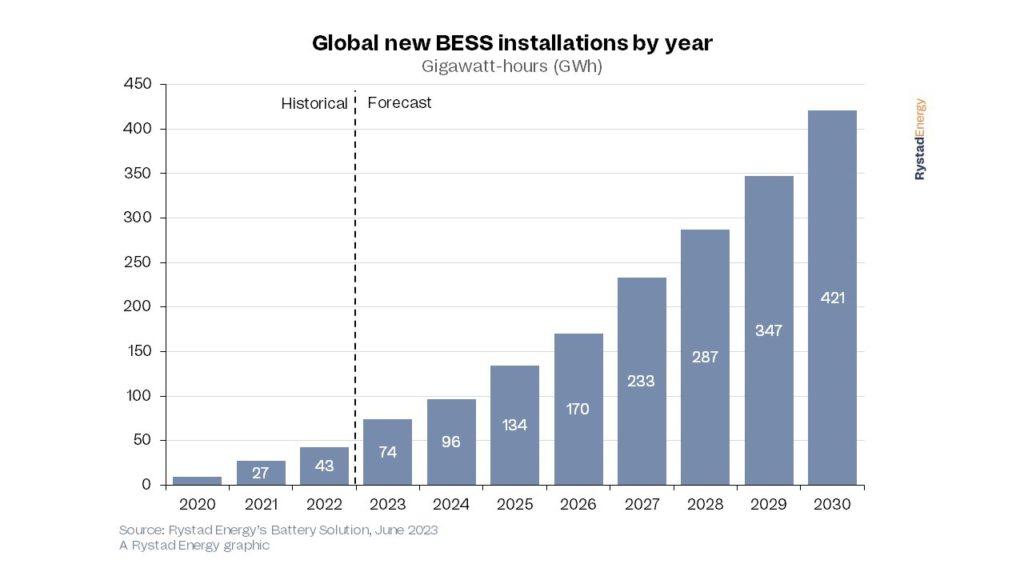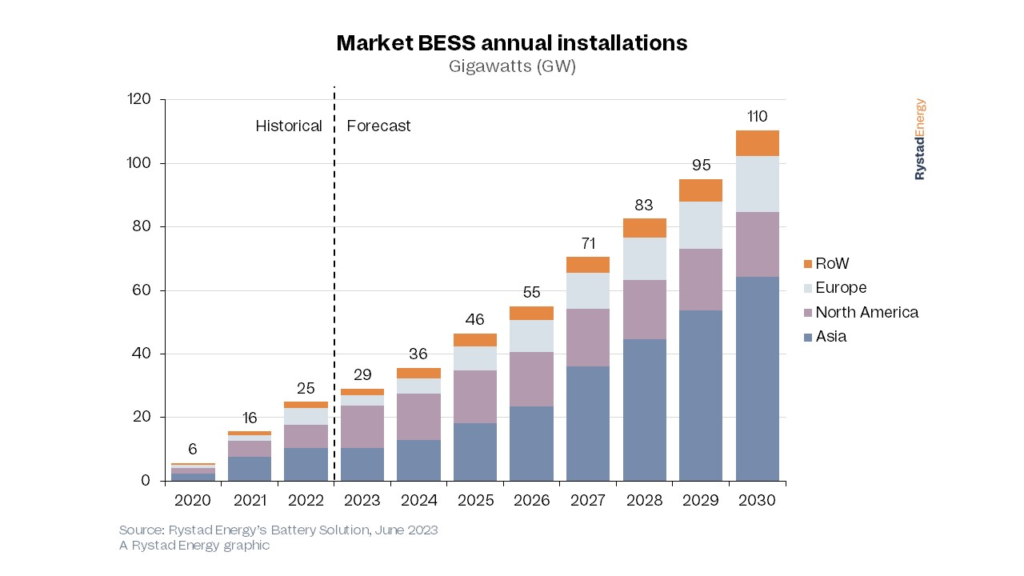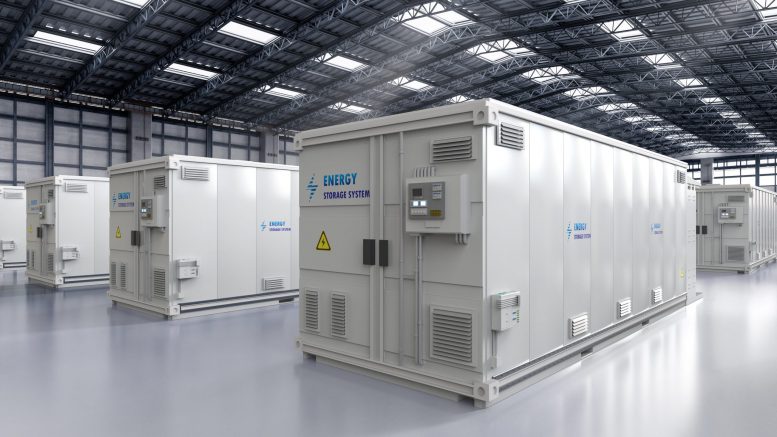Battery storage installations will surge in the coming years as storage becomes crucial to the world’s energy landscape, according to a report from Rystad Energy.
Annual battery storage installations will surpass 400 gigawatt-hours (GWh) by 2030, compared to 43 GWh in 2022, according to the business intelligence company. A further 74 GWh will be added this year – a 72% increase compared to 2022.

Battery energy storage systems (BESS) are a configuration of interconnected batteries designed to store a surplus of electrical energy and release it for upcoming demand.
As the world transitions to greener sources of power generation such as solar PV and wind, battery energy storage developments will be critical in meeting future energy demand.
“Batteries will play a fundamental role in the future of energy production and power demand, solving the intermittency problem of renewable energy generation. To decrease reliance on coal and gas as back-up power generation sources, countries must invest in BESS now,” says Sepehr Soltani, energy storage analyst at Rystad Energy.
“The U.S. Inflation Reduction Act has catalyzed renewable and clean tech expansion, boosting expected solar and onshore wind capacity by 40% and expecting to add more than 20 GW battery capacity compared to before the Act.”
The expansion has also been supported by the European Green Deal Industrial Plan and China’s commitment to peaking emissions by 2030.
By 2030, annual BESS market installation will hit 110 gigawatts (GW) on a power basis, almost equivalent to peak residential power consumption for France and Germany combined.
Of the total, 58% will be developed in Asia.

“This is a shift from current trends, as the projected installation at the end of 2023 is expected to be dominated by North America, which will account for 45% of total BESS capacity,” said Rystad Energy.


Be the first to comment on "Battery storage installations to increase ten-fold by 2030 – report"